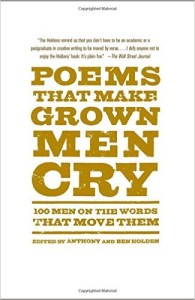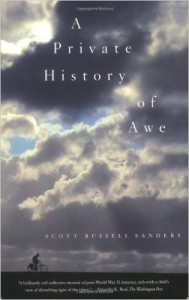When I heard that October is Theological Libraries Month, I was thrilled. As Content Curator for The Seattle School, I’m in charge of gathering content for this blog, and a topic like “theological libraries” felt like a goldmine. With so many thoughtful, creative, spiritually minded people (like Kate Davis and Daniel Tidwell) in one place, we could spend years talking about all of the books and films that contribute to our theological imaginations.
Except when I say our theological imaginations, I don’t always mean it. I mean yours. Even though, as I’ve written about here before, my stance toward God is more open and active than it’s been in years, I still bristle at the word theology. In fact, when I was first moving to Seattle and people asked where I was going to school, I’d sometimes say “The Seattle School of Psychology,” choosing to omit such a loaded little word. (I recently shared that with Chelle Stearns when I was in her office—not something you anticipate confessing to your theology professor.)
But, as with so many other things in my first two years at this school, all of that is beginning to shift. As I hear that all theology has context, that it’s not just about old men with beards arguing over archaic terminology, and as I hear friends share about how their theology deepens their love for people and their care for the world, that word is beginning to feel more relevant—inviting, even.
So I wonder: what are the texts that have shaped my theological imagination?
As a teenager, I Kissed Dating Goodbye along with all the other church kids. Wild at Heart made me feel like a man, and thanks to Lee Strobel’s The Case for _______ books, I never had any reason to ask questions.
A couple years later, Blue Like Jazz and Velvet Elvis made questions cool, and Shane Claiborne suggested that maybe not all Christians have to vote Republican—a novel idea for me. I read C.S. Lewis and N.T. Wright in college, and I told everybody I was going to seminary to become a pastor. Meanwhile, I’d go home after leading a Bible study and read Christopher Hitchens and Bertrand Russell, secretly wondering if I was an atheist.
Eventually Richard Rohr and Henri Nouwen (among others) began to give me hope again, and I decided that, no, I’m probably not an atheist.
But after all that, none of those are the texts I think of when I consider my theological imagination.
 I think of poetry: Wendell Berry’s wild things, Robert Frost’s question about walls and neighbors, and how T.S. Eliot’s J. Alfred Prufrock helps me feel a little less lonely. I first read David Berman’s “Self-Portrait at 28” in college, and I still can’t figure out why it makes me cry so much. In fact, there’s a book called Poems That Make Grown Men Cry that I like to keep handy in case I’m feeling emotionally deprived, and what is theology about if not the desire to feel love and hope more fully, to feel truth in a way that sinks into our bones?
I think of poetry: Wendell Berry’s wild things, Robert Frost’s question about walls and neighbors, and how T.S. Eliot’s J. Alfred Prufrock helps me feel a little less lonely. I first read David Berman’s “Self-Portrait at 28” in college, and I still can’t figure out why it makes me cry so much. In fact, there’s a book called Poems That Make Grown Men Cry that I like to keep handy in case I’m feeling emotionally deprived, and what is theology about if not the desire to feel love and hope more fully, to feel truth in a way that sinks into our bones?
And then I think of nature essays and the way that John Muir leads me to silence, Annie Dillard leads me to curiosity, and Chet Raymo leads me to wonder. Because what is theology about if not deepening our capacity to see and feel and know the glory and tragedy of the world around us?
I think of fiction, too. As a teenager, Hemingway and Vonnegut showed me a world that was bigger, stranger, and more beautiful than I’d ever imagined, Tim O’Brien made me wonder if peace requires more courage than war, and William Faulkner and Flannery O’Connor introduced me to the haunted holiness of place. These days, a good short story—from David James Duncan or George Saunders, say—or a sprawling novel—think Cormac McCarthy or Neil Gaiman—will spark my imagination more than anything else. And what is theology without imagination?
 Perhaps even more than poetry, essays, and fiction, I think of the true and semi-true stories we tell about our lives. Frederick Buechner writing about his father’s suicide, David Carr’s brutal stories of life as a father and a drug addict, Scott Russell Sanders and the life-changing power of awe. Joan Didion, Tobias Wolff, Maya Angelou, David Sedaris, Anne Lamott, Philip Connors, and—more recently for me—Mary Karr and Ta-Nehisi Coates. This list, of course, could go on for pages, because when we look at our world with courage and curiosity, we never run out of stories.
Perhaps even more than poetry, essays, and fiction, I think of the true and semi-true stories we tell about our lives. Frederick Buechner writing about his father’s suicide, David Carr’s brutal stories of life as a father and a drug addict, Scott Russell Sanders and the life-changing power of awe. Joan Didion, Tobias Wolff, Maya Angelou, David Sedaris, Anne Lamott, Philip Connors, and—more recently for me—Mary Karr and Ta-Nehisi Coates. This list, of course, could go on for pages, because when we look at our world with courage and curiosity, we never run out of stories.
Recently in The Seattle School’s Memoir as Art and Spiritual Practice class, Dyana Herron said that storytelling allows us to ask new questions in new ways, by seeing the world and bearing witness to what we see—in all of its horror and absurdity. And really, I wonder, what is theology if not asking questions and bearing witness?
Seeing a month-long theme like “Theological Libraries,” some of you might be surprised to not find more explicitly religious texts in these blogs. It’s a fair question, and I assure you there is no shortage of scholarly theological material in our library and lining the walls of our professors’ offices. But for me, as both a recovering fundamentalist and a recovering cynic, ideas ring hollow without the messy embodiment of stories.
Or, as Flannery O’Connor said, storytellers “descend far enough to reach those underground springs that give life . . . a descent through the darkness of the familiar. This is the beginning of vision.”
By the way—these days, when folks ask where I go to school, I say it—all of it—with honor.

